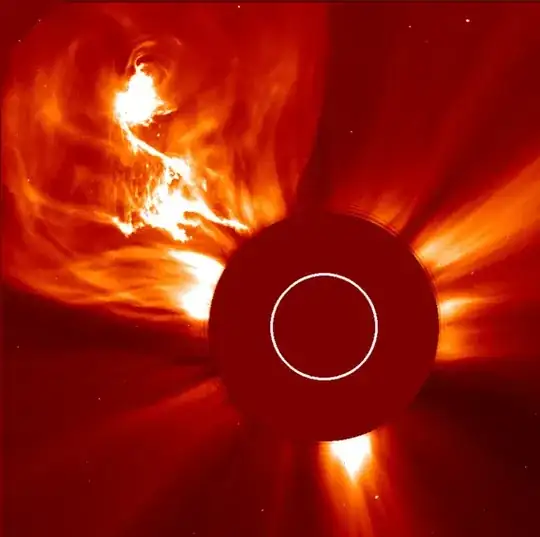Yesterday (March 6), a massive X-class solar flare erupted from the Sun.

I was wondering if this kind of solar flares can affect in some way the orbit of a planet if aimed directly. Let's say, for example, Mercury.
Can this happen at all?
Yesterday (March 6), a massive X-class solar flare erupted from the Sun.

I was wondering if this kind of solar flares can affect in some way the orbit of a planet if aimed directly. Let's say, for example, Mercury.
Can this happen at all?
CMEs can't disrupt planetary orbits. When you consider a collision you should compare the momenta of the colliding masses and while the speed of CMEs is up to two orders of magnitude larger than orbital speeds of the planets, its total mass is more than ten orders of magnitude smaller. Moreover, since CME's wave spreads over a huge area and since planetary radius is at least 4-5 orders of magnitude smaller than the radius of a planetary orbit, only a tiny fraction of a CME actually hits a planet. Consequently, the momentum change is too tiny to produce a noticeable disruption to a planetary orbit.
Here are some numbers: Mercury's mass: 3.3×1023 kg, CME's mass: 1.6×1012kg, Mercury's average orbital velocity: 47.87 km/s, the speed of fastest CMEs: 3200 km/s, approximate ratio of Mercury's cross-section to the area of a sphere enclosing its orbit's perihelion: 7×10-10.
Even assuming that the mass of a CME is concentrated within 1% of the full spherical angle and heads directly for Mercury, we have a collision between a CME of mass
\begin{equation} 100 \cdot 7×10^{-10} \cdot 1.6×10^{12}kg = 112511 kg \end{equation}
and momentum 3.6×108 kg m/s with a planet whose momentum is 1.58×1028 kg m/s.